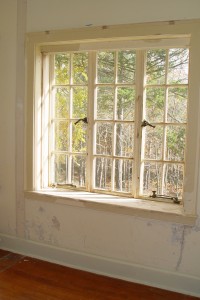 Each year, homeowners invest hundreds of dollars in in order to protect their families. However, what they may not know is that there are dangers that already exist and they could already be putting their family at risk. Home contaminants are often silent killers that threaten the safety and security of one’s home, and sadly, the deadly effects are discovered much too late. There are several of these toxic risks that are the most common, and modern-day homeowners should be aware of their existence, as well as the dangers they can pose.
Each year, homeowners invest hundreds of dollars in in order to protect their families. However, what they may not know is that there are dangers that already exist and they could already be putting their family at risk. Home contaminants are often silent killers that threaten the safety and security of one’s home, and sadly, the deadly effects are discovered much too late. There are several of these toxic risks that are the most common, and modern-day homeowners should be aware of their existence, as well as the dangers they can pose.
Lead is one of the deadliest toxins that many homeowners unwittingly live with every day. While newer homes have little to no risk of exposing their owners to lead, if a home is well over twenty years old, the risk of lead exposure increases. The Natural Resources Defense Council :
More than a quarter century after the 1978 ban on lead in paint, nearly half a million American prekindergarten children have elevated levels of lead in their blood. That’s largely because old lead paint remains on the walls in many homes, workplaces, and schools. This paint can emit lead-laced dust particles, especially during remodeling and construction. Old, corroded lead pipes are another common culprit. Elevated blood-lead levels in kids increase risk of learning disabilities, behavioral problems, anemia and, in extreme cases, serious brain damage.”
Homeowners should have their home thoroughly inspected if it is older, and if lead paint is present, it should only be removed by a professional to decrease the risk of further exposure.
Another toxic risk of which many homeowners are unaware is radon. Radon cannot be seen with the naked eye and has no odor, making it virtually undetectable without a monitoring kit. The gas is caused by the decomposition of radium in the ground, which is a natural event in nature. Radon is most often found in the lower levels of a home, particularly in the basement. Rooms with no windows or vents are especially at risk of having dangerous amounts of this gas. Large amounts of radon can cause lung cancer, so homeowners should inspect their home with a radon detection kit that can bepurchased at almost any home hardware or store.
These silent killers continue to claim lives every year, but homeowners can prevent the presence of home contaminants when they educate themselves about their risk factors and what they can do to keep their families safe.

Zach Jefferson
Author – Zach has six years under his belt as a marketing manager within the home security industry. He is in charge of keeping site information as accurate as possible, while developing new content ideas for consumers.

